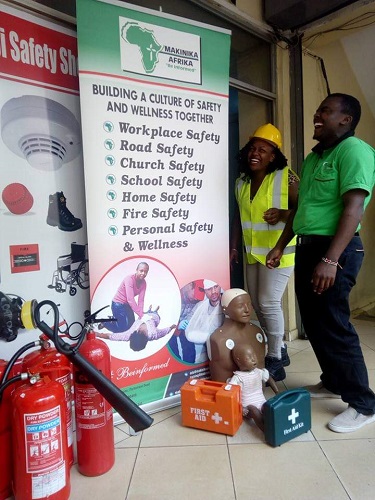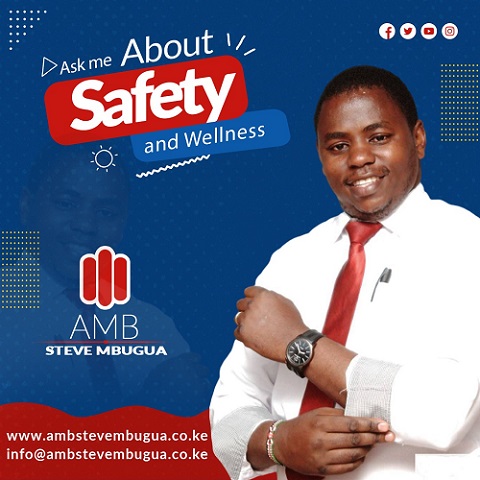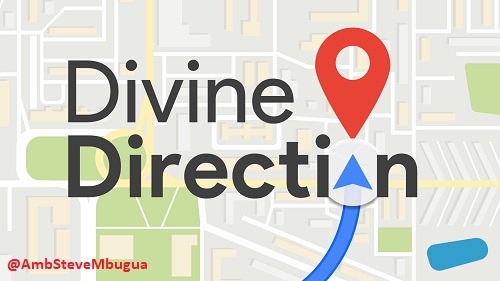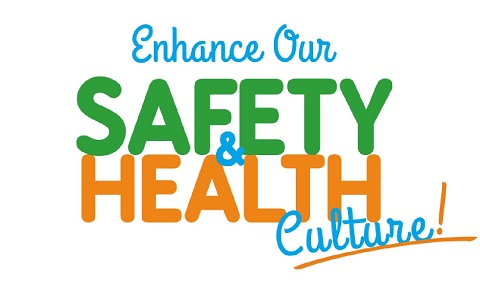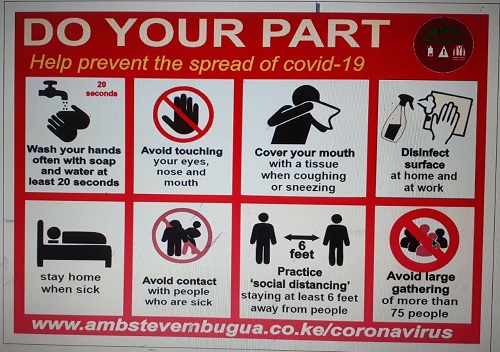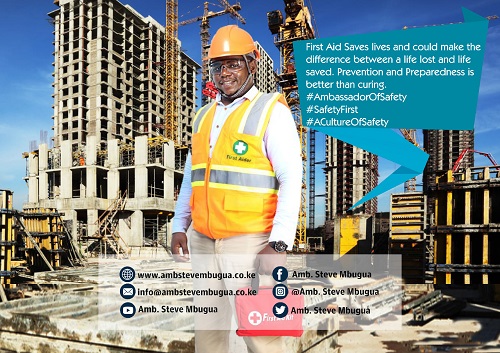Home safety is a fundamental aspect of personal well-being, impacting the health and security of individuals and families. As Ambassador Steve Mbugua, the globally recognized Ambassador of Safety, I am committed to raising awareness and promoting best practices for home safety across communities. This article explores essential strategies for ensuring home safety, including risk assessments, fire prevention, safe handling of household chemicals, and the implementation of security measures. By prioritizing home safety, individuals can create a secure living environment that protects loved ones and enhances peace of mind. Let us explore the key components of effective home safety management and foster a culture of safety within our homes.
Home safety encompasses the measures and practices that ensure the protection of individuals and families within their homes. This involves safeguarding against potential hazards that can cause injury or harm, such as fires, falls, poisonings, and other accidents. Ensuring a safe home environment requires awareness, proper equipment, regular maintenance, and adherence to safety guidelines and regulations.
Common Causes of Home Accidents
1. Fires: Caused by cooking, electrical faults, heating equipment, candles, and smoking materials.
2. Falls: Slips, trips, and falls often occur due to wet floors, uneven surfaces, poor lighting, and clutter.
3. Poisoning: Accidental ingestion of household chemicals, medications, and carbon monoxide poisoning.
4. Choking: Common among children, caused by small objects, food, or toys.
5. Burns: Caused by hot liquids, steam, open flames, and electrical sources.
6. Drowning: Incidents in bathtubs, swimming pools, and even large buckets of water.
7. Cuts and Lacerations: From sharp objects like knives, broken glass, and tools.
8. Electrical Shock: Due to faulty wiring, improper use of electrical appliances, and lack of grounding.
9. Suffocation: Often occurs with infants due to unsafe sleeping environments and plastic bags.
10. Strangulation: From window blind cords, drawstrings, and other similar items.
11. Firearm Accidents: Improper storage and handling of guns in the home.
12. Toxic Plants: Ingestion of poisonous plants found indoors or in the garden.
Latest Trends in Home Safety
1. Smart Home Technology: Integration of smart smoke detectors, security systems, and carbon monoxide alarms.
2. Home Automation: Systems that control lighting, heating, and appliances to prevent accidents.
3. Aging-in-Place Modifications: Home adaptations to enhance safety for elderly residents.
4. Non-Toxic Cleaning Products: Use of environmentally friendly and non-toxic cleaning supplies.
5. Child-Proofing Innovations: Advanced safety gates, locks, and protective gear for children.
6. Eco-Friendly Building Materials: Safe and sustainable materials that reduce health risks.
7. Water Leak Detection Systems: Smart sensors that alert homeowners to leaks to prevent water damage and mold.
8. Improved Fire-Resistant Materials: Use of fire-resistant fabrics and construction materials.
9. Emergency Preparedness Kits: Pre-packaged kits for home emergencies, including natural disasters.
10. Home Safety Apps: Mobile applications that provide safety checklists, reminders, and emergency contacts.
11. Enhanced Home Security Systems: Advanced surveillance, motion sensors, and alarm systems.
12. Voice-Activated Safety Devices: Smart devices controlled by voice commands for emergency situations.
13. LED Lighting: Energy-efficient and safe lighting solutions that reduce fire hazards.
14. Automated Medication Dispensers: Devices that help prevent accidental overdoses by managing medication schedules.
15. Pet Safety Products: Specialized safety products for homes with pets, including gates and non-toxic plants.
Home Safety Audits and Inspections
1. Fire Safety Inspection: Checking smoke detectors, fire extinguishers, and escape routes.
2. Electrical Safety Audit: Inspecting wiring, outlets, and appliances for potential hazards.
3. Plumbing Inspection: Ensuring no leaks, proper functioning of water heaters, and safe water temperatures.
4. Structural Integrity Check: Inspecting the foundation, walls, roof, and stairs for stability and safety.
5. Indoor Air Quality Test: Checking for radon, mold, and other pollutants.
6. Security Assessment: Evaluating door locks, windows, and security systems.
7. Child Safety Evaluation: Assessing the home for potential hazards to children and ensuring proper child-proofing.
8. Elderly Safety Audit: Ensuring the home is safe for older adults, including grab bars and non-slip mats.
9. Outdoor Safety Check: Inspecting the yard, pool, and exterior structures for hazards.
10. Emergency Preparedness Review: Ensuring the home has a plan and supplies for emergencies.
11. Firearm Safety Check: Verifying that firearms are stored securely and out of reach of children.
12. Chemical Storage Inspection: Ensuring household chemicals are stored safely and labeled correctly.
Home Safety Training
1. Fire Safety Training: Educating household members on fire prevention, use of extinguishers, and evacuation plans.
2. First Aid Training: Teaching basic first aid skills for common home injuries.
3. CPR Training: Providing instruction on performing CPR on adults, children, and infants.
4. Childproofing Training: Guidance on childproofing the home to prevent accidents.
5. Elderly Care Safety Training: Educating caregivers on creating a safe environment for elderly residents.
6. Home Security Training: Training on the use of security systems and personal safety measures.
7. Poison Prevention Training: Educating on the safe storage and use of household chemicals and medications.
8. Water Safety Training: Providing instruction on pool safety, water rescue techniques, and preventing drowning.
9. Emergency Preparedness Training: Preparing household members for natural disasters and other emergencies.
10. Pet Safety Training: Guidance on keeping pets safe and managing pet-related hazards.
11. Healthy Home Training: Educating on maintaining a healthy indoor environment and air quality.
12. Electrical Safety Training: Teaching safe practices for using electrical appliances and equipment.
Home Safety Installations
1. Smoke Detectors: Installing smoke detectors on every level of the home and in bedrooms.
2. Carbon Monoxide Detectors: Placing detectors near sleeping areas and fuel-burning appliances.
3. Fire Extinguishers: Installing and maintaining fire extinguishers in key locations like the kitchen and garage.
4. Security Systems: Installing alarm systems, surveillance cameras, and motion detectors.
5. Child Safety Gates: Using gates to restrict access to stairs and hazardous areas.
6. Grab Bars and Handrails: Installing in bathrooms and stairways for elderly safety.
7. Non-Slip Mats: Placing in bathrooms, kitchens, and other areas prone to wetness.
8. Window Guards: Installing guards to prevent falls from windows.
9. Pool Fences and Alarms: Installing safety barriers and alarms around swimming pools.
10. Automatic Shutoff Devices: For stoves and other appliances to prevent fires.
11. Smart Home Devices: Integrating smart plugs, sensors, and alarms for enhanced safety.
12. Emergency Ladders: Placing escape ladders in upper-story rooms for fire evacuation.
13. Water Leak Detectors: Installing sensors to detect leaks and prevent water damage.
14. Radon Detectors: Monitoring for radon levels to ensure indoor air quality.
15. Safe Storage Solutions: Secure storage for chemicals, medications, and firearms.
16. Outdoor Lighting: Installing motion-sensor lights for improved security.
17. Backup Generators: For maintaining power during outages.
18. Surge Protectors: Preventing electrical damage to appliances and electronics.
19. Home Automation Systems: Centralized control for lighting, security, and appliances.
20. Fire-Resistant Materials: Using fire-resistant building materials and furnishings.
21. Childproof Latches and Locks: On cabinets, drawers, and doors to keep hazardous items out of reach.
22. Thermostatic Mixing Valves: Preventing scalding by controlling water temperature.
22. Review Emergency Contact List: Ensure everyone knows emergency numbers and has a list readily available.
23. Check Lighting: Ensure adequate lighting in all areas, including stairways, halls, and exterior.
24. Use Anti-Slip Strips: Apply strips to stairs and slippery surfaces.
25. Inspect Furniture Stability: Ensure heavy furniture is secured to walls to prevent tipping.
26. Install Deadbolts: Add deadbolts to exterior doors for added security.
27. Secure Loose Rugs: Use rug pads or tape to prevent tripping on loose rugs.
28. Regularly Test Alarms: Test smoke and carbon monoxide detectors monthly.
29. Check Water Temperature: Ensure water heater is set to a safe temperature to prevent scalding.
30. Clear Pathways: Keep walkways and exits clear of clutter and obstructions.
31. Inspect Outdoor Areas: Check for hazards like loose steps, uneven paving, or overgrown vegetation.
32. Store Chemicals Safely: Keep household chemicals locked away and out of reach of children.
33. Use Safety Caps: On medications and cleaning products to prevent accidental poisoning.
34. Secure Electrical Cords: Ensure cords are not frayed and are safely routed to avoid tripping.
35. Maintain Appliances: Regularly check and maintain home appliances to prevent malfunctions.
36. Inspect Heating Systems: Have heating systems checked annually for safety.
37. Secure Outdoor Equipment: Store tools and equipment safely to prevent accidents.
38. Implement a Fire Escape Plan: Create and practice a fire escape plan with all household members.
39. Childproof Outlets: Use outlet covers to prevent electrical shocks.
40. Keep a Fire Blanket Handy: In the kitchen for quickly smothering small fires.
41. Regularly Clean Dryer Vents: To prevent lint buildup and potential fires.
Laws or Regulations That Apply to Home Safety
1. Residential Building Codes: Standards for construction, electrical, plumbing, and mechanical systems.
2. Fire Safety Codes: Regulations on smoke detectors, fire extinguishers, and escape routes.
3. Child Safety Standards: Guidelines for cribs, toys, and other children’s products.
4. Electrical Safety Regulations: Requirements for safe electrical installations and appliances.
5. Plumbing Codes: Standards for safe water supply and waste disposal.
6. Carbon Monoxide Detector Laws: Mandates for installation of CO detectors in homes.
7. Pool Safety Regulations: Requirements for fencing, alarms, and safety features for residential pools.
8. Gas Safety Regulations: Standards for the installation and maintenance of gas appliances and systems.
9. Lead Paint Regulations: Rules for dealing with lead-based paint in older homes.
10. Radon Mitigation Standards: Guidelines for radon testing and mitigation in homes.
11. Landlord-Tenant Laws: Regulations ensuring safe living conditions in rental properties.
12. Occupational Safety and Health Standards: Requirements for home-based businesses and telecommuting.
Home safety is a comprehensive and ongoing effort that involves understanding the potential hazards, staying updated with the latest trends and technologies, conducting regular audits and inspections, providing adequate training, and installing necessary safety equipment. By adhering to regulations and continuously improving safety measures, homeowners can create a secure environment that minimizes risks and protects all household members. Through proactive and informed actions, a culture of safety can be established, ensuring that homes remain a safe haven for everyone.
In conclusion, home safety is a vital element of personal security that requires proactive attention and practical measures. As the Ambassador of Safety, I have highlighted the importance of conducting regular risk assessments, practicing fire safety, safely handling household chemicals, and implementing security protocols. By adopting these strategies, individuals can minimize risks, ensure the safety of their families, and create a safe and secure home environment. Let us commit to championing home safety and working together to promote safe living spaces that prioritize the well-being of all residents. Embracing these practices not only protects lives but also contributes to a healthier and more harmonious community.
READ MORE
Home Safety Video
Largest Home Safety Equipment Shop
Conducting Safety Workshops
Building A Culture Of safety



